In the renowned image editing software DxO PhotoLab 3, palettes played a central role in editing and managing your images. These various cleaning and adjustment tools provide you with a wide range of functions that enable creative and precise work on your images. In this guide, we will show you how to use these palettes effectively.
Key insights
- Trust the various palettes and their functions.
- Use the collapsing and adjusting of the palettes to structure the interface.
- Understand the functionalities of individual sliders and their impact on the image.
- Create your own palettes to optimize your workflow.
Step-by-Step Guide
1. Overview of the Palettes
Before you start editing, you should familiarize yourself with the different palettes. Switch to the editing area and select an image to display the palettes. You’ll notice that there are various categories on the right side. These include histogram, exposure, color, detail, and geometry.
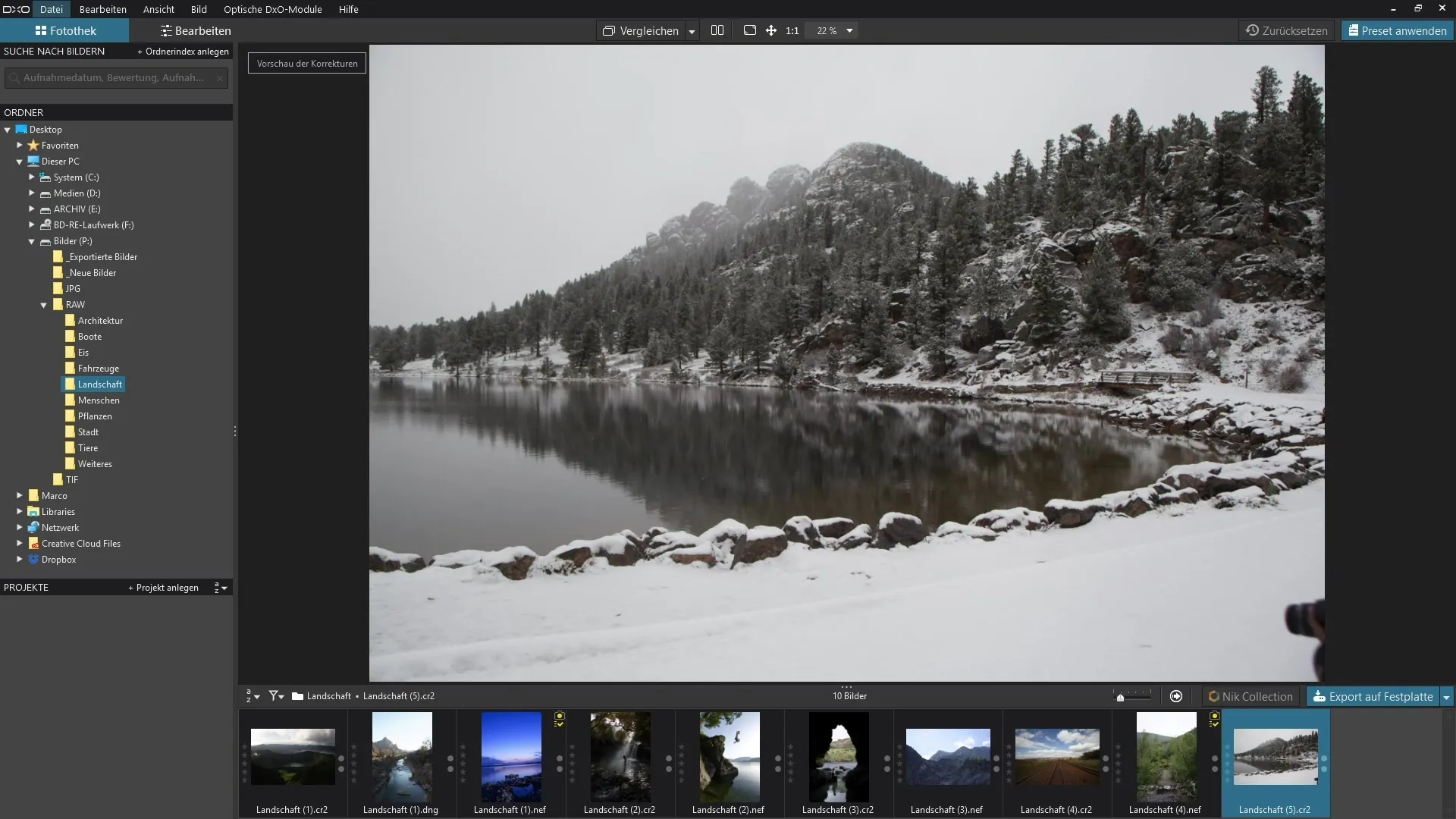
2. Expand and Collapse Palettes
For better usability, you can expand and collapse the palettes as needed. Simply click on the name of the palette you wish to open or close. For your control, it is often helpful to keep the histogram open while you work with the other palettes.
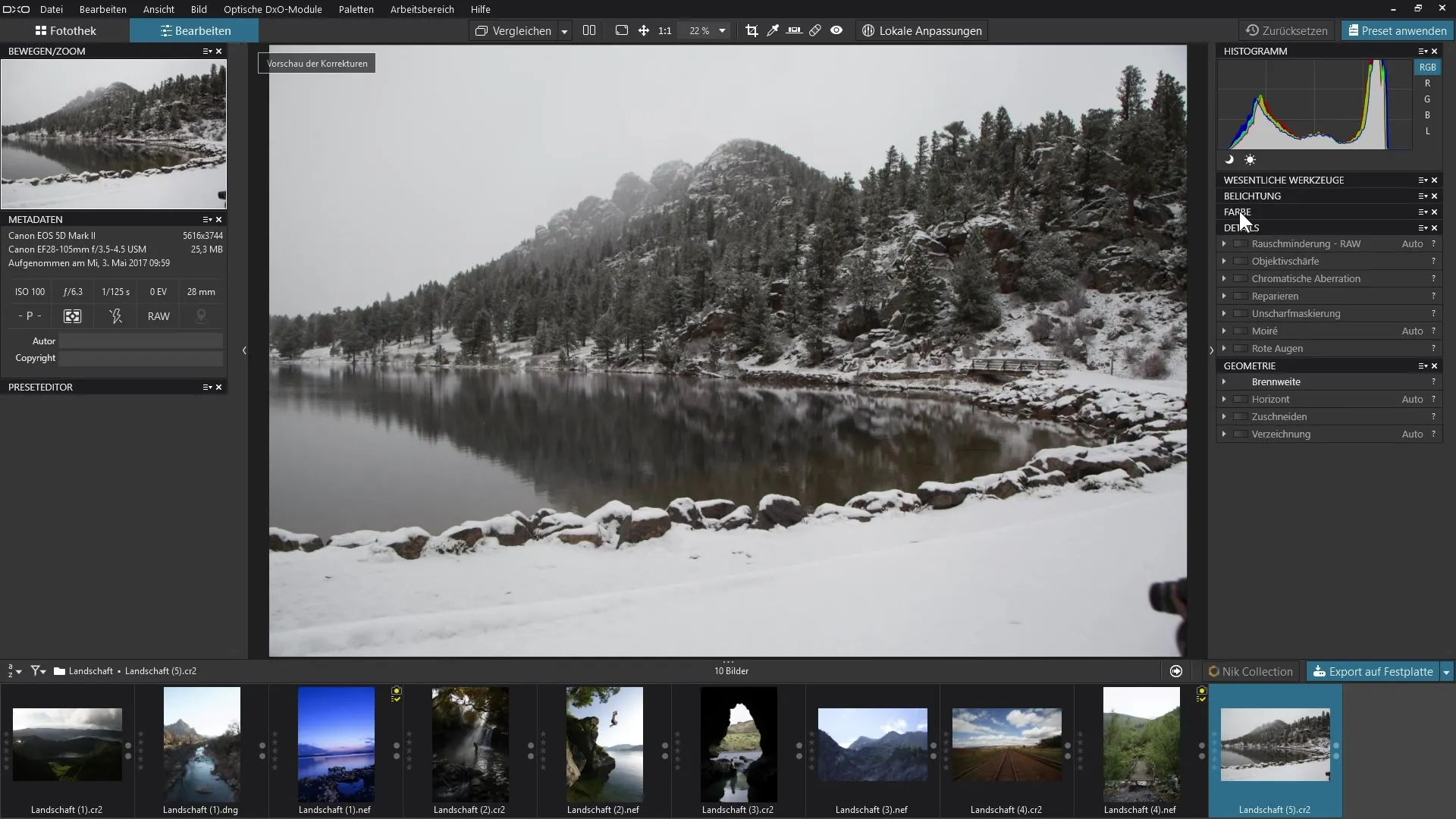
3. Change the Order of the Palettes
An efficient arrangement of the palettes can significantly improve your workflow. Simply drag a palette to the desired position by holding the left mouse button. In the current version of DxO PhotoLab 3, this only works in one direction, either up or down.
4. Dock or Use Palettes Floating
You have the option to dock palettes left or right, allowing you to display them in a comfortable position for you. Alternatively, you can keep a palette floating for use on another monitor.
5. Hide and Retrieve Palettes
If a palette distracts you or you no longer need it, you can hide it. Click the corresponding icon to do so. To retrieve the palette later, go to the "Palettes" menu and activate it again.
6. Explanations of the Functions
Each function within a palette has a small question mark. If you click on it, an explanation will pop up, detailing what that particular function does. This can be especially helpful if you are uncertain about the effects these functions have on your image.
7. Adjusting the Sliders
Move the sliders to make adjustments. If you use one of the automatic functions, the slider will be activated accordingly and provide you with immediate visual feedback. A double-click on the slider resets it to the starting value.
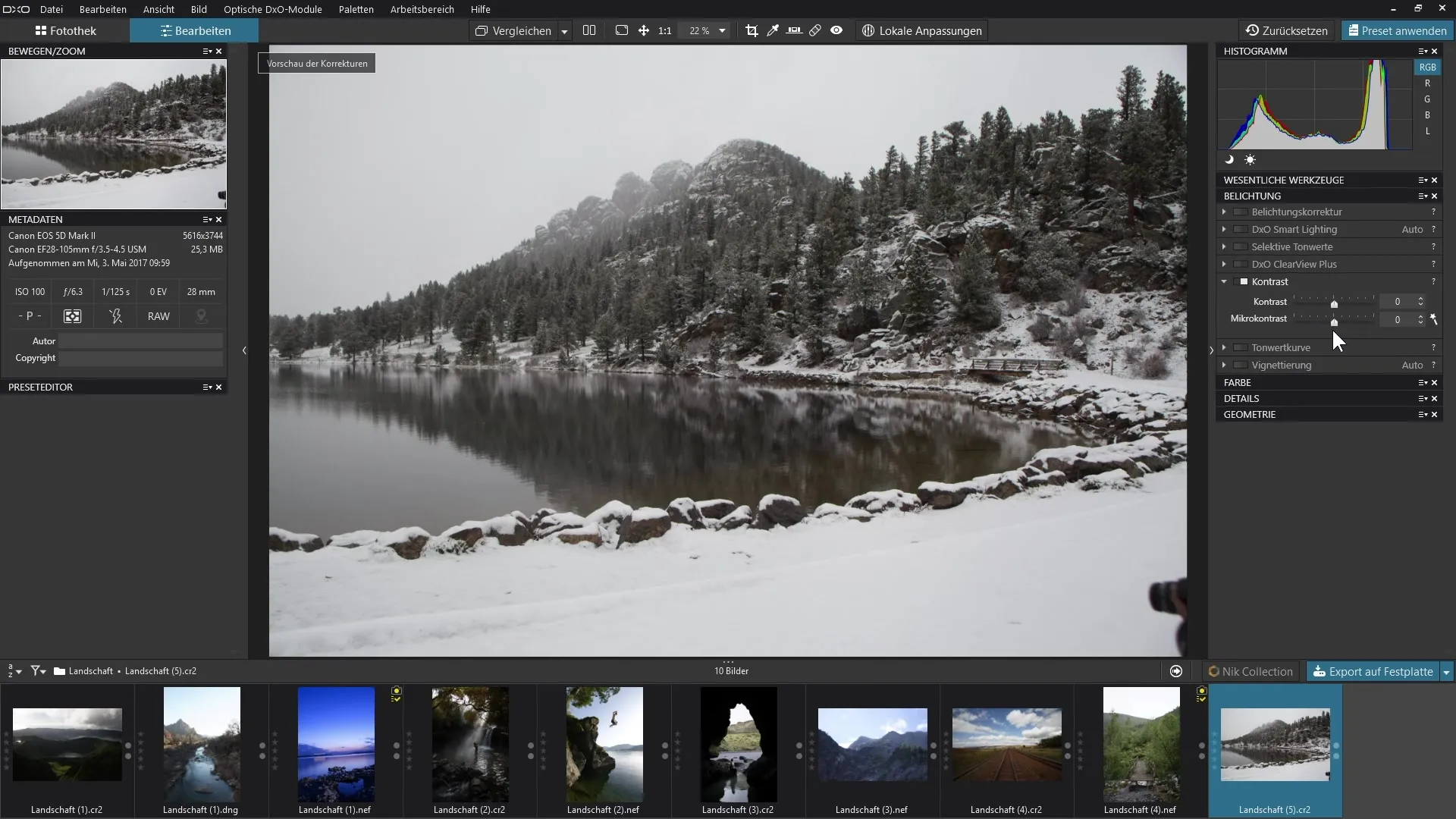
8. Zoom Levels and Their Effects
Note that some filters only become visible at a specific zoom level. For fine-tuning details, you should zoom into the detail area to see the necessary adjustments clearly.
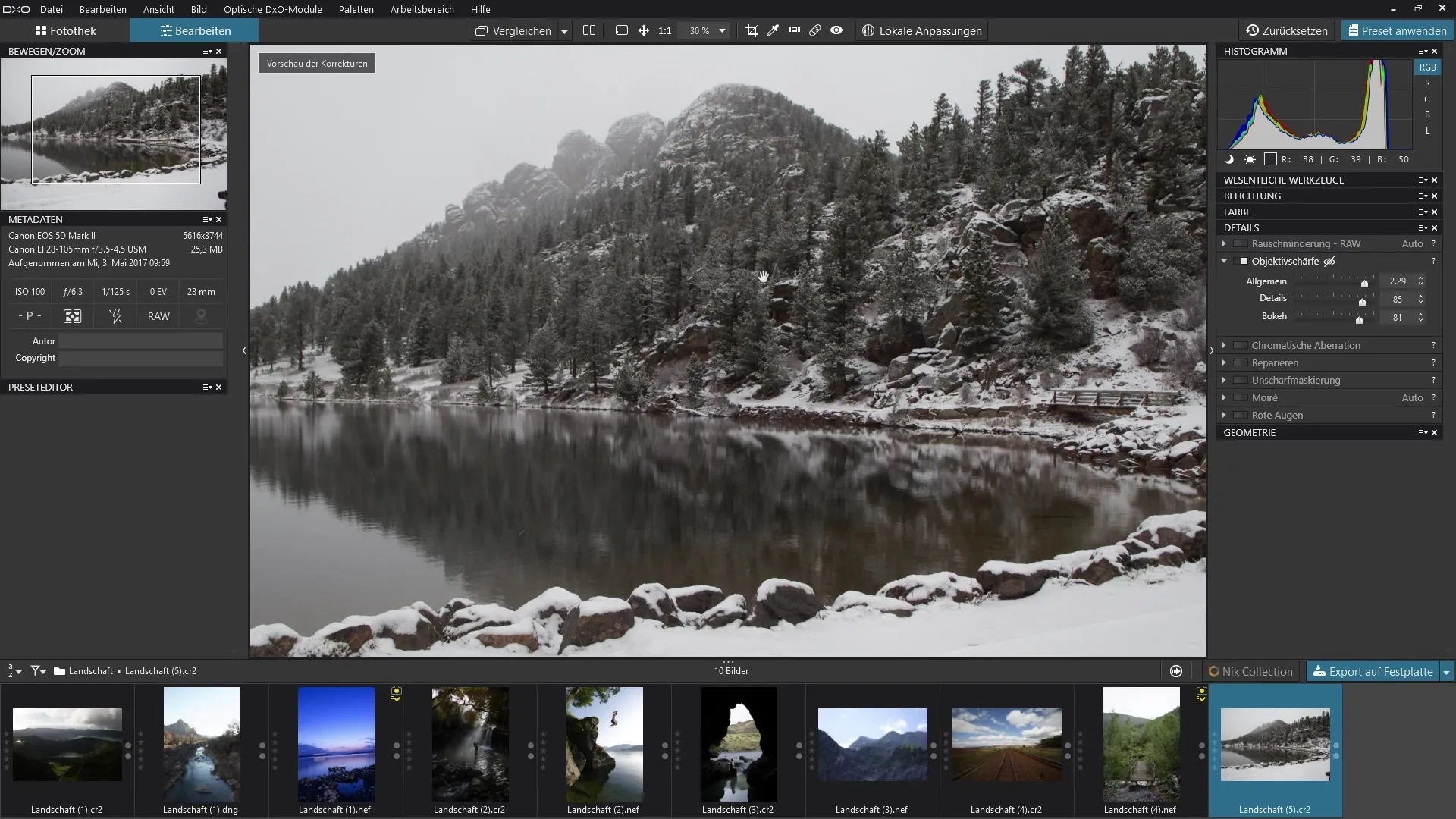
9. Use DxO Modules
DxO PhotoLab automatically recognizes your camera and the lens used. It downloads the corresponding DxO modules to correct common errors like chromatic aberration or vignetting. Make sure these functions are enabled in the palettes so that the corrections become visible.
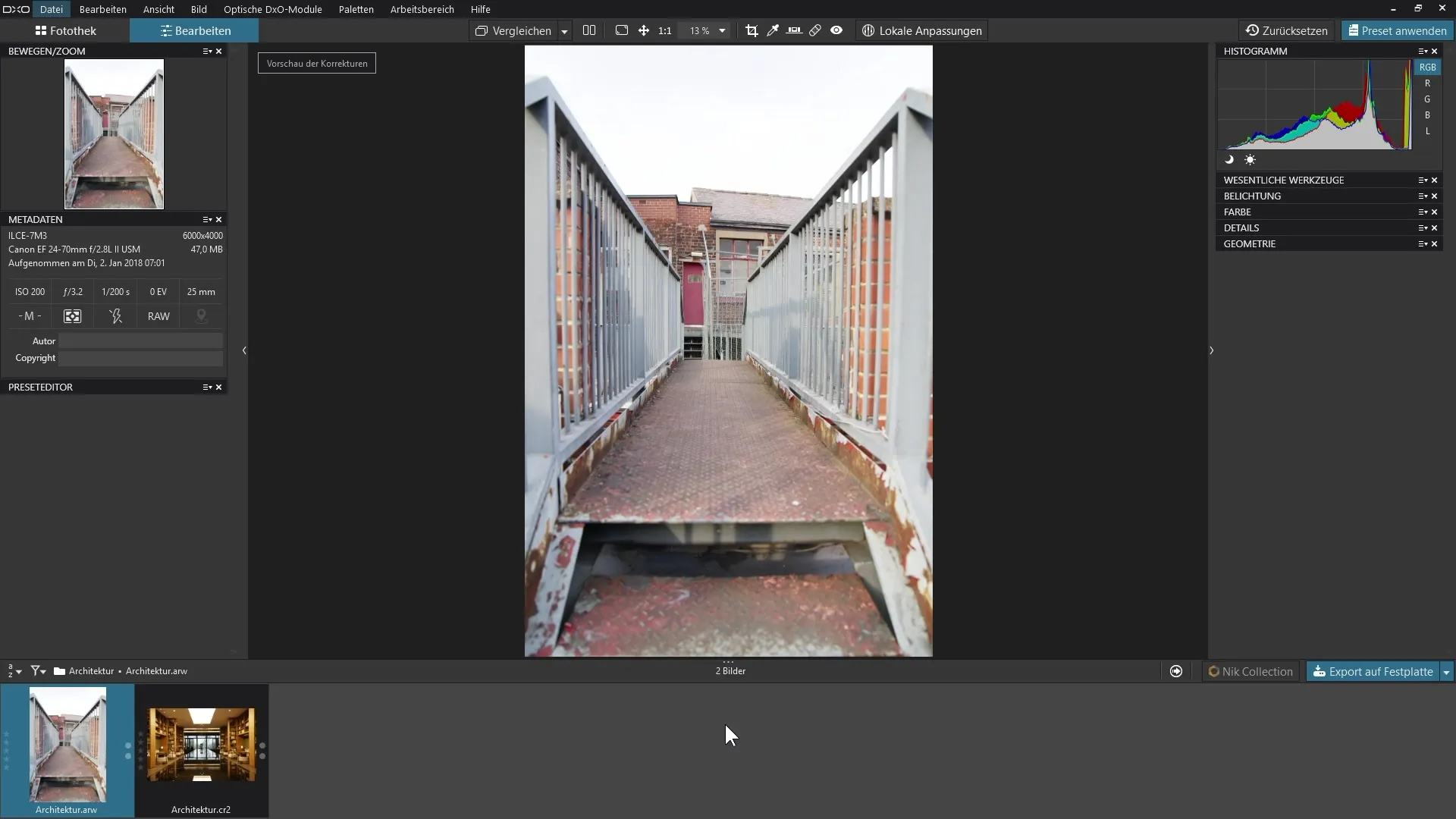
10. Create Custom Palettes
To further optimize your workflow, you can create your own palettes that group frequently used functions. Click on "Palettes" and select "Create New Palette." Name it and add the desired functions.
11. Manage Your Custom Palettes
Custom palettes can be managed at any time through the hamburger icon. You can rename, move, or delete them if they are no longer needed.
Summary – Effective Use of Palettes in DxO PhotoLab 3
The various palettes in DxO PhotoLab 3 provide you with the tools you need to manage and edit your images. By specifically adjusting and utilizing these palettes, you can significantly improve your workflow and unleash your creativity. Use the various functions to make effective adjustments.
Frequently Asked Questions
How can I place palettes in my workspace?You can dock palettes by dragging them with the mouse or use them floating.
How do I hide a palette?Click on the corresponding icon of the palette to hide it.
What does the question mark next to the functions do?Click on it to get a brief explanation of the respective function.
Can I customize palettes to my preferences?Yes, you can rearrange palettes, create your own, and add functions.
What should I consider when changing a zoom level?Some filters only become visible at a certain zoom level. Make sure you can zoom in closer to make adjustments.


